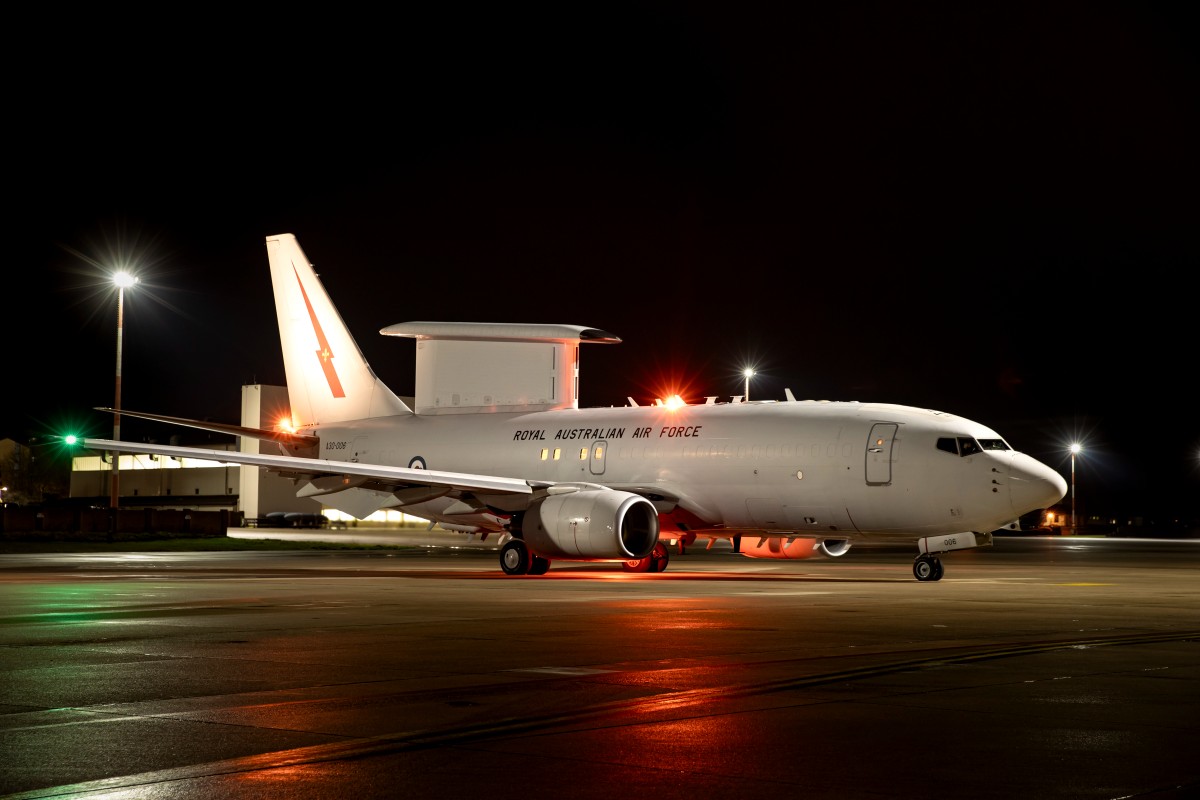A Royal Australian Air Force E-7A Wedgetail aircraft is scheduled to return to Australia after a six-month deployment in Europe, where it was a part of Operation Kudu, providing aid to Ukrainian forces.
The Australian Wedgetail, which, according to experts, played a critical role in aiding Ukraine in shooting down multiple Russian military aircraft.
On April 2, Australia’s Defense Ministry issued a press release announcing the return of the E-7A aircraft. In October 2023, the Royal Australian Air Force’s E-7A Wedgetail, accompanied by a team of up to 100 Australian Defence Force personnel, was deployed to Germany for a six-month mission.
Their objective: to provide crucial surveillance, safeguarding both military and humanitarian aid across Eastern Europe.
According to the Defense Ministry, during their deployment, the E-7A Wedgetail contingent logged more than 250 hours of flight time, with missions averaging five hours in the air.
Australian Defence Force personnel were stationed at Ramstein Air Base in Germany to support the mission. Lieutenant General Greg Bilton, Chief of Joint Operations, commended the ADF personnel for their support to protect a vital gateway for international humanitarian and military assistance into Ukraine.
“The deployment was a tangible demonstration of Australia’s commitment to supporting our partners in upholding the global rules-based order,” Lieutenant General Bilton remarked.
Air Marshal Robert Chipman, Chief of Air Force, praised the capabilities of the E-7A Wedgetail as one of the most advanced airborne early warning systems globally, perfectly suited for the task of providing support to the vital gateway.
“I commend our people on their hard work and commitment, channeling our ethos of being a ready, resilient, and resourceful force,” Air Marshal Robert Chipman.
The return of the E-7A Wedgetail marks the conclusion of a crucial chapter in Australia’s support for Ukraine. Notwithstanding the return of the E-7A Wedgetail, Australia’s military assistance to Ukraine will continue.
The expanded training element of Operation Kudu will see up to 90 personnel providing vital training to Armed Forces of Ukraine personnel in the UK throughout 2024, as stated by the Ministry of Defense.
Killer Of Russian Su-34s?
Following its deployment in Ukraine last year, the Royal Australian Air Force’s E-7A Wedgetail aircraft attracted considerable attention from experts, who speculated about its possible contribution to supporting Ukrainian armed forces.
The speculation primarily centered on its alleged involvement in the reported downing of three Russian Aerospace Forces (RuAF) Su-34 frontline bombers, as the RuAF likely lacked experience in countering the E-7A. You can read the full EurAsian Times analysis here.
Western Airborne Warning and Control System (AWACS) aircraft have played a prominent role in boosting Ukrainian strikes against Russian positions, an aspect frequently highlighted by both Russian officials and various media outlets.
Intelligence and surveillance support from Western allies contributed to Ukraine’s successful sinking of several ships in Russia’s Black Sea fleet over the past two years. However, Australia clarified that its Wedgetail was not providing information to facilitate such attacks.
While no confirmed evidence supports its direct involvement, the aircraft contributed to safeguarding the international flow of assistance into Ukraine by providing early warning against potential threats from Russia.
Operating outside of Russian, Belarusian, and Ukrainian airspace, the E-7A monitored other air corridors, notably from Poland, to provide early warning of air strikes, which allowed ground-based defenses time to react.

Based on the Boeing 737 700, the Wedgetail features a long-range surveillance radar and can simultaneously track airborne and maritime targets.
Lieutenant General Bilton highlighted the E-7A’s deployment as filling a capability gap that NATO was unable to address at the time. He noted the positive feedback received during his visits to the UK and Europe, emphasizing the valuable contribution of this capability.
The Wedgetail contingent primarily comprised personnel from 2 Squadron based in Newcastle, with support elements including 1 Security Forces Squadron and 1 Combat Communications Squadron from Canberra and other locations.
The deployment of the Australian aircraft in Europe was in response to a request from the United States.
It is understood that the US has not sought an extension of the deployment beyond its April deadline, and the conclusion of Australia’s mission will not create a gap in Western monitoring capabilities.
- Contact the author at ashishmichel(at)gmail.com
- Follow EurAsian Times on Google News